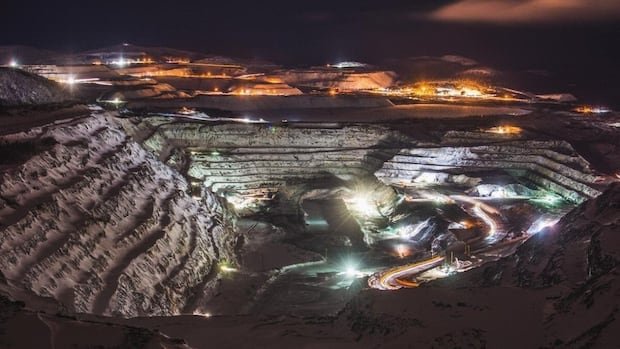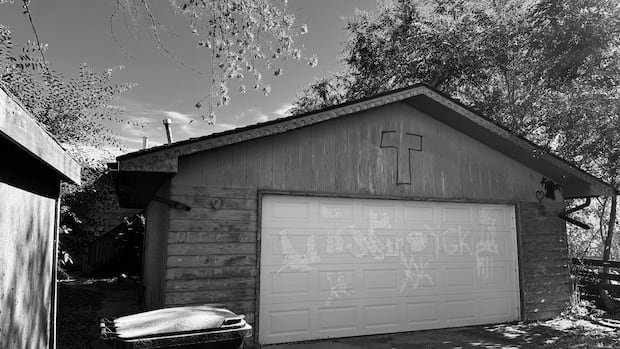Senior NL Hydro officials believe a proposed new deal for the sale of power to Hydro-Québec and the development of additional hydroelectric capacity on the Churchill River will drive a new surge in mining activity in Labrador, generate significant jobs and revenue for the province . and help meet the growing global demand for so-called “green” steel.
This is in addition to billions of dollars in investment and thousands of new construction jobs over the next decade as energy production on the river expands by nearly 4,000 megawatts.
Such a scenario was part of the sales pitch used by NL Hydro chief executive and chair Jennifer Williams and deputy chair Walter Parsons in the House of Assembly last week during a special session on the Churchill Falls memorandum of understanding.
Both Hydro executives told MHA that iron ore companies are showing strong interest in expanding their existing operations or developing new mines in Labrador West.
Proof of that, they said, is an ongoing study reviewing options to transmit more electricity from Churchill Falls to Labrador West. It is being funded by mining companies, has reached an advanced stage in terms of engineering and initial design and is proposing the construction of a new transmission line at a cost of more than $1 billion to “meet their decarbonization needs,” Parsons said. .
The current twin line between Churchill Falls and western Labrador runs for about 240 kilometres.
The transmission study is expected to be completed this year and Parsons is confident that mining companies will continue with the project.
“All the signs certainly point in that direction. So we would hope that if they make that decision next year, within 2025, then we would begin the process of building the line,” he said.
But these plans can only become a reality, Parsons said, if the current availability of renewable, zero-emission hydropower is greatly expanded.
“Without access to additional generation, there is no business case to build that line,” he said.
That’s why the MOU with Hydro-Québec was carefully negotiated to ensure that new power blocks from the current Churchill Falls station are available on a phased basis to NL Hydro over the next decade, Williams said.
“That was very much part of how we approached this MOU,” Williams said.
Current energy availability is “almost exhausted”
Currently, 525 of the Churchill Falls Power Station’s more than 5,400 megawatts of capacity are allocated to NL Hydro to power the electrical grid in Labrador, and approximately 312 megawatts of that capacity are sold to mining companies, specifically the Iron Ore Company of Canada in Labrador. City and Tacora Resources in Wabush, via two transmission lines from Churchill Falls.
The rest of that power is sold to Hydro-Québec for just 0.2 cents per kilowatt hour under an unequal agreement that has been in place since 1969 and will not expire until 2041.
The memorandum of understanding, which was signed on December 12 and will replace the 1969 contract, proposes that Hydro-Québec pay gradually higher prices for that electricity, starting at 1.63 cents in 2025 and rising to 7.84 cents in 2041. .
Premier Andrew Furey has said the provincial treasury will collect an average of $1 billion a year from the proposed new Churchill Falls power purchase agreement through 2041. Under the existing contract, the province will receive about $20 million .
Meanwhile, Walter Parsons said the 525 megawatts currently available to NL Hydro from Churchill Falls are “almost exhausted,” and capacity levels are so tight in Labrador West that any new development over 200 kilowatts must obtain a waiver order. the province’s public service company. regulator, the PUB.
Without new contract, Labrador power levels will ‘hit a wall’, Williams says
Without the MOU, the current bottleneck will remain unchanged until 2041, Williams said, and economic growth will be hampered.
“You can basically wire a house, but even that at some point could probably hit a wall…because we just don’t have access to power,” he said.
The MOU proposes that NL Hydro will be able to retire an additional 305 megawatts in 2031 and grow to a total of 1,490 megawatts by 2041. That’s nearly double the peak output of the Muskrat Falls project.
The withdrawal blocks were strategically staggered to coincide with growing energy demand in Labrador West due to potential mining growth, Williams explained.
For example, construction of the new transmission line is expected to take five years.
“We believe that the amount of energy that we have included in this MOU for the coming periods in the coming decades is a balanced amount of energy to hold in reserve for the needs that we believe will be possible,” he said.
Investment will go elsewhere, energy minister said
The iron ore deposits in Labrador have been described as world-class due to their purity, and existing infrastructure, such as a railway and port facilities, have also attracted the attention of global investors.
Energy Minister Andrew Parsons said demand for iron ore is expected to rise by 40 to 50 million tonnes a year in the coming years, and the push to produce steel using sustainable and environmentally friendly methods is yet another advantage in Labrador.
But if additional power cannot be made available to the mining industry, Parsons said investments will go elsewhere, along with jobs, royalties and other derived benefits.
“In order to do all this, we need power. We need transmission,” Andrew Parsons said.
Download our free CBC news app to sign up to receive automatic alerts from CBC Newfoundland and Labrador. Click here to visit our home page.








